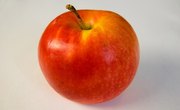Junior high English students are faced with high expectations as they prepare to enter high school. They have to exhibit mastery of grammar and language, and be able to analyze the subtle elements of literature. Games and activities will help them bolster both of these skill sets, and at the same time break the monotony of traditional English instruction.
Vocabulary Builder Tables
Split the class into groups and give each student a blank table worksheet. Students then label each row with a category -- in the beginning they can use parts of speech as category labels. Have them label the columns with the individual letters of a word. For example, if the word is "plums," the first column would be labeled "P," and so on. Next, have students trade their worksheets with another member of their group. Each student now fills out his or her table with words that fit the category and begin with the same letter as the column label. For instance, for the box in column "P and row "Noun," a student could write "platypus."
Short Story Adaptations
Assign a short story to read. The next day, split the class into groups and explain that each group will have 15 minutes to create a brief, alternate version of the story, one that places the story into the context of their own lives and that they can present orally to the class. For example, if the story takes place in Puritan New England, one group could reset the story into their own town. Invite them to take liberties with the genders and ages of characters as well. Their only requirements are to make sure they preserve the general structure, main events and themes of the original. This activity will help students connect more intimately with the issues raised in their readings.
Team Editing and Discussion
After students have completed a short writing assignment, split the class into groups of three. Have each student pass his paper to another person in the group, and then have each student edit the paper he has been given. Students should focus on paragraph construction and organization as well as grammar and usage. Afterward, have students pass their papers once again, so that each student has now held each of his partners' work. These second editors should review the first round of edits, and add suggestions for any further edits. Once each group has completed this exercise, they can discuss the edits made to each paper, and why they agree with the edits or do not.
Competetive Sentence Diagramming
Lead your students through a lesson on how to diagram sentences. Afterward, split the class into two teams and explain that they will compete against one another in a diagramming competition. The game works like this: Clear two large areas on the chalkboard and write the same sentence on each area. Then, have one player from each team approach the chalkboard. At your command to begin, students will each diagram the sentence as quickly as possible. The first student to correctly diagram the sentence wins the round and earns a point for her team. Write new sentences for each round, and after every student has played, the team with the most points wins.
Related Articles
References
Writer Bio
Christopher Cascio is a memoirist and holds a Master of Fine Arts in creative writing and literature from Southampton Arts at Stony Brook Southampton, and a Bachelor of Arts in English with an emphasis in the rhetoric of fiction from Pennsylvania State University. His literary work has appeared in "The Southampton Review," "Feathertale," "Kalliope" and "The Rose and Thorn Journal."











